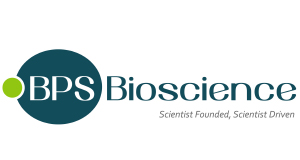GCGR/CRE Luciferase Reporter HEK293 Cell Line
GCGR/CRE Luciferase Reporter HEK293 Cell Line
SKU
BPS82187
Packaging Unit
2 vials
Manufacturer
BPS Bioscience
Availability:
loading...
Price is loading...
Products from BPS Bioscience require a minimum order value above 400€
Application: Screen for agonists of human GCGR in a cellular model
Background: The glucagon receptor (GCGR) belongs to the Class B1 family of G protein-coupled receptors (GPCR family). Along with GLP-1R (glucagon-like peptide 1 receptor) and GIPR (gastric inhibitory polypeptide receptor), it is one of the critical receptors that regulate glucose homeostasis. Glucagon, the ligand of GCGR, increases insulin secretion via GCGR and GLP-1R in pancreatic β cells, although GLP-1R is the main insulin-promoting receptor. In addition, it has been shown that glucagon enhances hepatic lipid metabolism and reduces food intake in rodents and humans. More recently, encouraging clinical results from a triple-hormone-receptor agonist, Retatrutide, and several GLP-1R/GCGR dual agonists, suggest that GCGR could be a promising co-stimulating target for type 2 diabetes and obesity.
Description: GCGR/CRE Luciferase Reporter HEK293 Cell Line is a HEK293 cell line that expresses the firefly luciferase reporter, under the control of the cAMP response element (CRE), and human GCGR (Glucagon receptor; NM_000160.5). Activation of GCGR in these cells can be monitored by measuring luciferase activity.This cell line was functionally validated with the agonists Glucagon and Retatrutide. Figure 1. Example of the mechanism of action of GCGR/CRE Luciferase Reporter HEK293 Cell Line when treated with glucagon.
Figure 1. Example of the mechanism of action of GCGR/CRE Luciferase Reporter HEK293 Cell Line when treated with glucagon.
Binding of glucagon to GCGR triggers the activation of adenylyl cyclase and results in an increase of cAMP in the cells. Protein kinase A is activated, allowing the activation of the CRE promoter and luciferase production. Luciferase activity is thus proportional to GCGR binding to its agonists.
Host Cell Line: HEK293
Mycoplasma Testing: The cell line has been screened to confirm the absence of Mycoplasma species.
Storage Stability: Cells are shipped in dry ice and should immediately be thawed or stored in liquid nitrogen upon receipt. Do not use a -80°C freezer for long term storage. Contact technical support at support@bpsbioscience.com if the cells are not frozen in dry ice upon arrival.
Supplied As: Each vial contains ˃1 x 106 cells in 1 ml of Cell Freezing Medium (BPS Bioscience #79796)
Warnings: Avoid freeze/thaw cycles
Biosafety Level: BSL-2
Application: Screen for agonists of human GCGR in a cellular model
Background: The glucagon receptor (GCGR) belongs to the Class B1 family of G protein-coupled receptors (GPCR family). Along with GLP-1R (glucagon-like peptide 1 receptor) and GIPR (gastric inhibitory polypeptide receptor), it is one of the critical receptors that regulate glucose homeostasis. Glucagon, the ligand of GCGR, increases insulin secretion via GCGR and GLP-1R in pancreatic β cells, although GLP-1R is the main insulin-promoting receptor. In addition, it has been shown that glucagon enhances hepatic lipid metabolism and reduces food intake in rodents and humans. More recently, encouraging clinical results from a triple-hormone-receptor agonist, Retatrutide, and several GLP-1R/GCGR dual agonists, suggest that GCGR could be a promising co-stimulating target for type 2 diabetes and obesity.
Description: GCGR/CRE Luciferase Reporter HEK293 Cell Line is a HEK293 cell line that expresses the firefly luciferase reporter, under the control of the cAMP response element (CRE), and human GCGR (Glucagon receptor; NM_000160.5). Activation of GCGR in these cells can be monitored by measuring luciferase activity.This cell line was functionally validated with the agonists Glucagon and Retatrutide.
 Figure 1. Example of the mechanism of action of GCGR/CRE Luciferase Reporter HEK293 Cell Line when treated with glucagon.
Figure 1. Example of the mechanism of action of GCGR/CRE Luciferase Reporter HEK293 Cell Line when treated with glucagon.Binding of glucagon to GCGR triggers the activation of adenylyl cyclase and results in an increase of cAMP in the cells. Protein kinase A is activated, allowing the activation of the CRE promoter and luciferase production. Luciferase activity is thus proportional to GCGR binding to its agonists.
Host Cell Line: HEK293
Mycoplasma Testing: The cell line has been screened to confirm the absence of Mycoplasma species.
Storage Stability: Cells are shipped in dry ice and should immediately be thawed or stored in liquid nitrogen upon receipt. Do not use a -80°C freezer for long term storage. Contact technical support at support@bpsbioscience.com if the cells are not frozen in dry ice upon arrival.
Supplied As: Each vial contains ˃1 x 106 cells in 1 ml of Cell Freezing Medium (BPS Bioscience #79796)
Warnings: Avoid freeze/thaw cycles
Biosafety Level: BSL-2
| SKU | BPS82187 |
|---|---|
| Manufacturer | BPS Bioscience |
| Manufacturer SKU | 82187 |
| Package Unit | 2 vials |
| Quantity Unit | PAK |
| Host | Human |
| Product information (PDF) | Download |
| MSDS (PDF) |
|

 Deutsch
Deutsch






